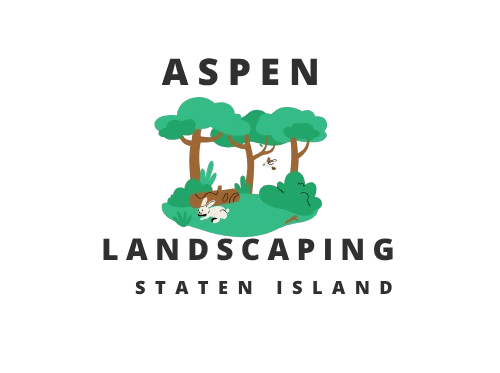retaining wall
Retaining walls are engineered structures designed to hold back soil, prevent erosion, and create level areas in sloping landscapes. In both residential and commercial settings, they not only address water runoff, soil instability, and uneven terrain but also enhance property value with their aesthetic and functional contributions. They serve as barriers to retain soil and are often designed to double as seating, planter walls, or privacy fences, integrating seamlessly into outdoor spaces with complementary materials such as natural stone, wood, concrete, or metal.With over 20 years of experience, Aspen Landscaping Staten Island has honed its expertise in building retaining walls that combine engineering precision with attractive design. Using high-quality materials like precast concrete, brick, lumber, or natural stone, their methods emphasize durability, proper drainage, and safety. Every wall is planned meticulously, ensuring it withstands environmental forces such as rain, frost, and erosion while enhancing the overall landscape design.
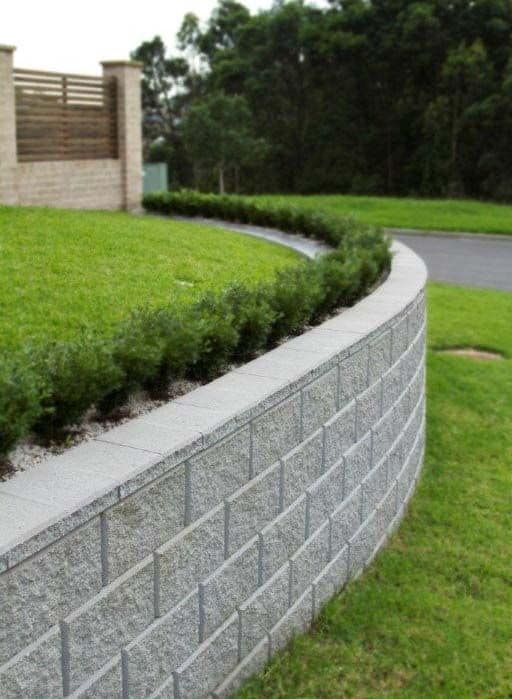
Key Takeaways
- Aspen Landscaping Staten Island Specializes in Designing and Constructing Various Types of Retaining Walls to Meet the Specific Needs of Each Property
- Gabion, Wood, Cement, Concrete, Stone, Crosstie, Cinder Block, Natural Stone, Timber, and Corten Retaining Walls Are Among the Options Available, Each With Unique Benefits and Aesthetic Qualities
- Aspen Landscaping’s Experienced Team Carefully Selects Materials and Construction Techniques to Ensure Durable, Long-Lasting, and Visually Appealing Retaining Walls That Complement the Surrounding Landscape
- Retaining Walls Offer Essential Functions Such as Erosion Control, Grade Management, and Improved Drainage While Enhancing the Overall Aesthetic of the Outdoor Space
- Aspen Landscaping Works Closely With Clients to Design and Build Customized Retaining Walls That Seamlessly Integrate With the Property’s Existing Features and Personal Style
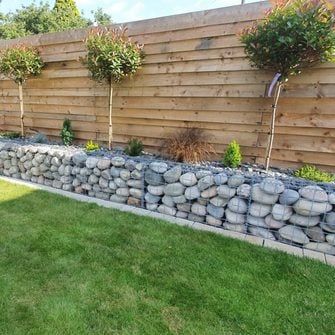
Gabion Retaining Wall
Gabion retaining walls use wire mesh cages filled with stones to create strong, flexible barriers that resist soil movement and enhance drainage. The mesh structure allows water to flow naturally, reducing hydrostatic pressure and preventing structural failure. Their rustic, industrial look can be enhanced with natural vegetation and is ideal for areas with eroding or unstable soil. Gabions are noted for their cost-effectiveness, ease of installation, and sustainability when using locally sourced stone.
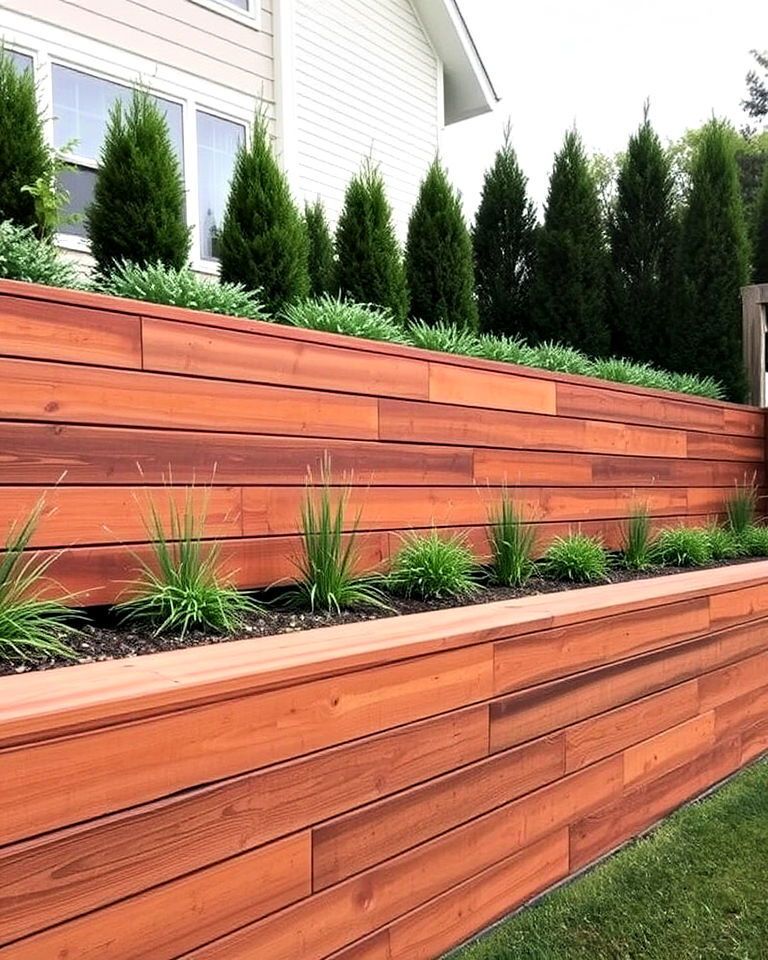
Wood Retaining Wall
Wood retaining walls, built with pressure-treated lumber, cedar, or redwood, add a warm, natural appearance while effectively managing slopes and preventing erosion. Their design incorporates drainage systems to avoid water buildup behind the wall, which is crucial to prevent rot and structural failure. Often used in residential landscapes, they can be designed in stepped or low wall formats and combined with planter boxes or integrated seating. Although they require periodic staining or sealing, they offer versatility and a rustic charm that blends well with garden designs.
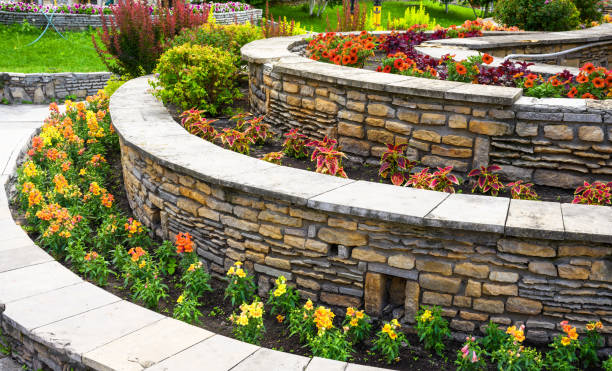
Cement Retaining Wall
Cement retaining walls, made from a mix of Portland cement, sand, and water, provide a rigid barrier against soil movement while enduring heavy rains and frost. These walls can be cast in place or constructed with precast concrete blocks, with reinforcement through steel rebar ensuring their tensile strength. Finished with polished, painted, or stone-veneered surfaces, cement walls deliver both controlled construction dimensions and robust performance. They are favored in projects where high structural integrity and effective drainage management are vital.
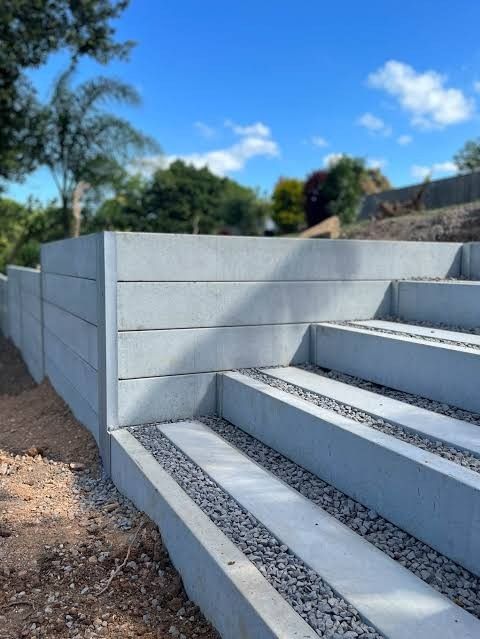
Concrete Retaining Wall
Similar to cement walls, concrete retaining walls utilize precast blocks or poured-in-place concrete specifically designed for soil retention. Manufactured under controlled conditions, they offer consistent size, texture, and strength. Their interlocking design includes built-in drainage channels to prevent water accumulation and damage from freeze-thaw cycles. Often enhanced aesthetically to mimic natural stone or brick, concrete walls are popular for both high-end residential and commercial projects due to their durability, low maintenance, and visual appeal.
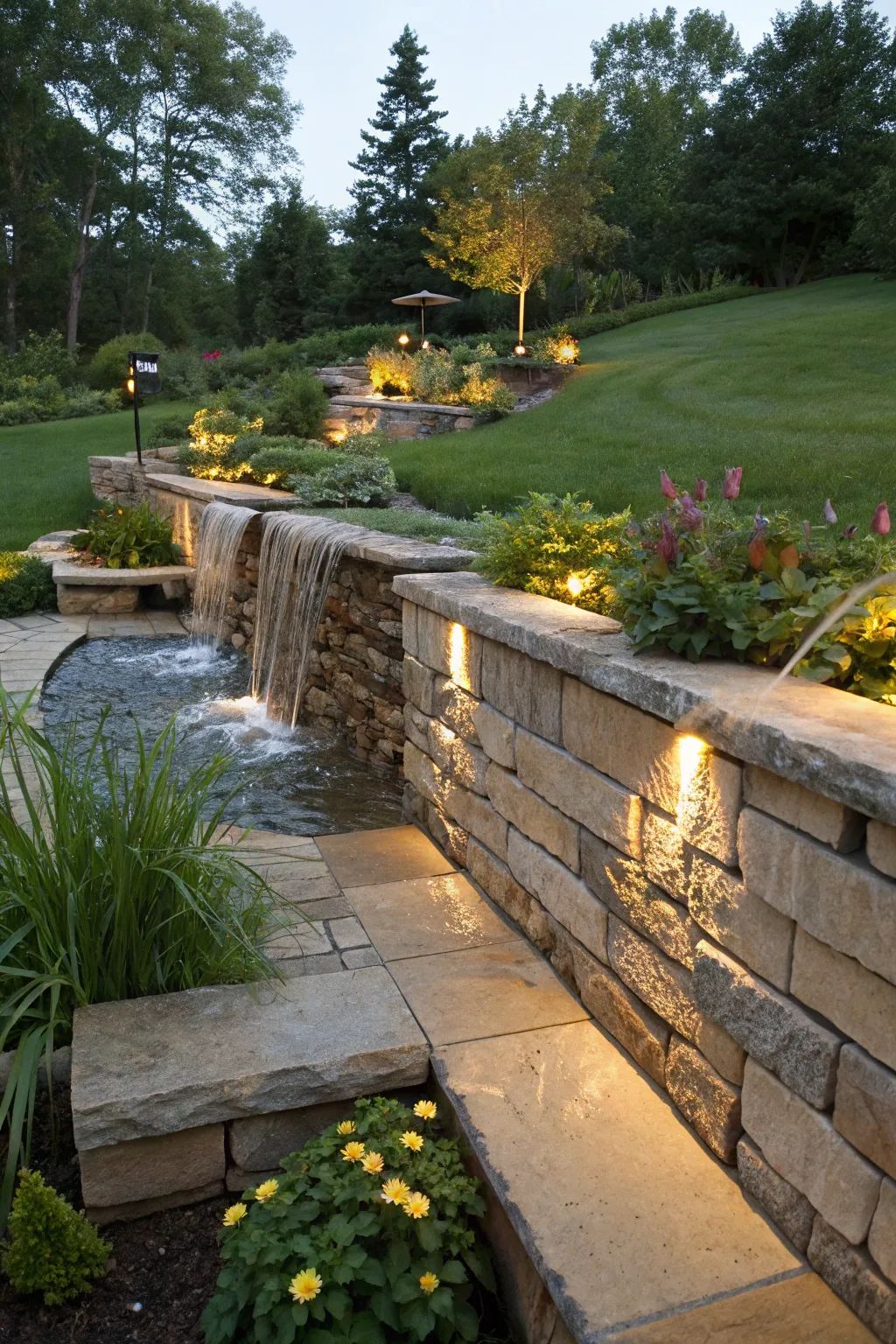
Stone Retaining Wall
Stone retaining walls rely on natural rock—whether cut stone, rubble, or boulders—to create walls that are both visually striking and highly durable. Constructed by skilled masons who carefully interlock each stone, these walls naturally resist weather extremes and facilitate drainage through their porous structure. Ideal for adding a timeless, organic element to landscapes, stone walls also offer thermal mass benefits and can be paired with terraced gardens or seating areas. Despite a higher initial cost, their low maintenance and enduring beauty make them a premium choice.
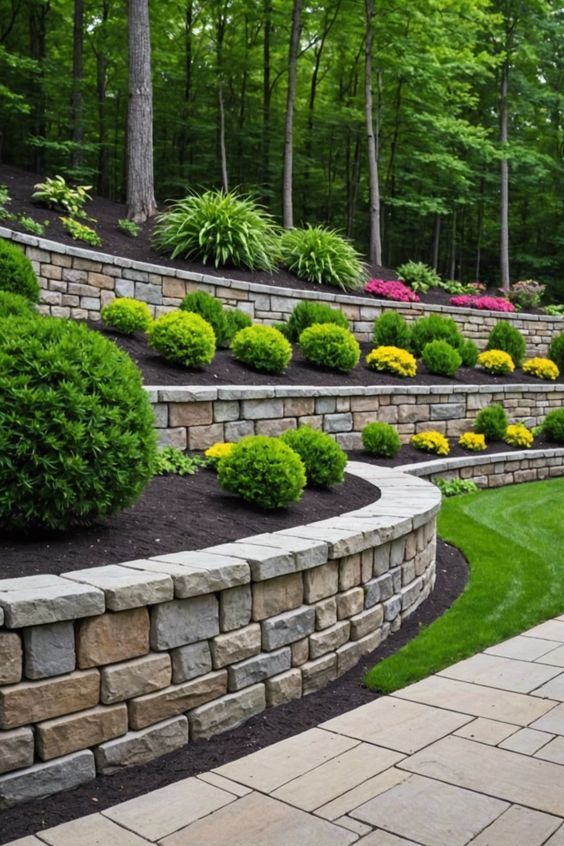
Crosstie Retaining Wall
Crosstie retaining walls are built using repurposed railroad ties, offering an economical yet attractive solution for retaining soil in residential settings. Their distinctive, weathered appearance adds rustic charm to gardens, and they are easy and quick to construct. Proper drainage measures—such as landscape fabric and gravel backfill—are essential to prevent water damage. Crosstie walls are popular for DIY projects and for landscapes aiming for a vintage or reclaimed look while promoting sustainability through material repurposing.
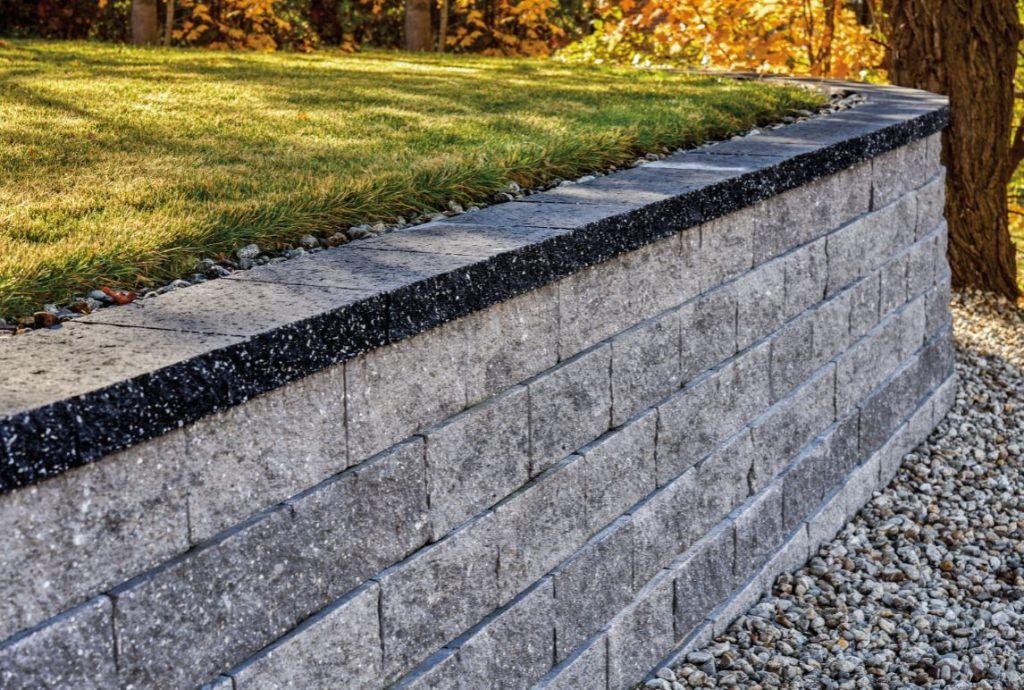
Cinder Block Retaining Wall
Constructed with standardized concrete masonry units, cinder block retaining walls are known for their modular design, ease of installation, and cost-effectiveness. Their interlocking blocks and heavy weight ensure stability under lateral soil pressure, while built-in drainage features like weep holes and backfill with gravel help prevent water buildup. Widely used in urban and suburban areas, these walls integrate well with sidewalks, patios, and driveways, making them a practical choice for a variety of properties with efficient maintenance requirements.
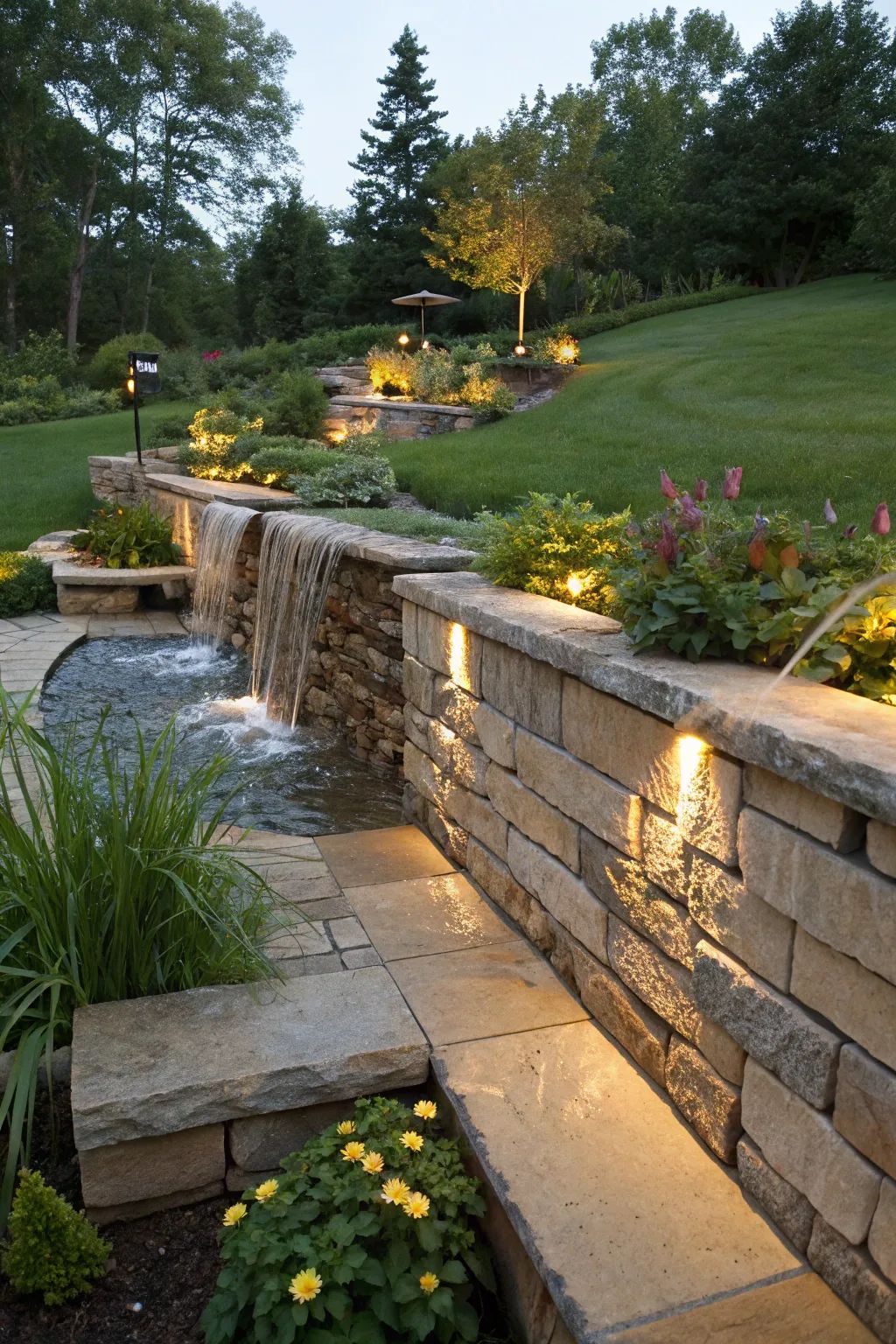
Natural Stone Retaining Wall
Natural stone retaining walls use uncut or minimally processed rock to achieve an organic, high-end appearance that enhances landscape design. Each wall is unique in color, texture, and form, reflecting careful craftsmanship in its dry-stacked or mortar-bonded assembly. Offering natural drainage, thermal benefits, and an eco-friendly appeal, these walls are excellent for creating rock gardens, decorative borders, or seating areas. Although the initial investment may be higher, their longevity and low ongoing maintenance establish them as a lasting, sustainable choice.

Timber Retaining Wall
Timber retaining walls, made from pressure-treated wood, cedar, or redwood, offer both practicality and a warm, natural aesthetic. They are designed with proper drainage and anchoring systems to mitigate water retention and prolong the life of the wood. Adaptable in design—whether straight, curved, or layered with additional elements like integrated seating or lighting—timber walls blend seamlessly into garden and residential settings. Their renewable nature supports sustainable practices while providing cost-efficient, effective soil retention.
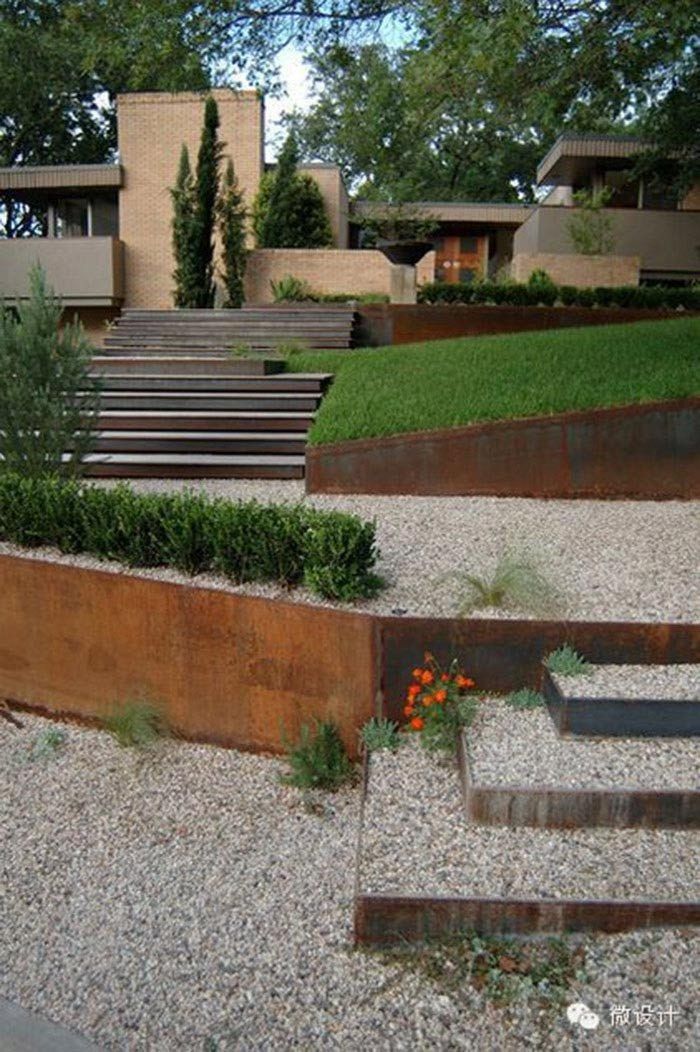
Corten Retaining Wall
Corten retaining walls utilize weathering steel to combine an industrial aesthetic with superior durability. Over time, Corten steel forms a protective, rust-like oxide layer that not only gives these walls a unique color palette but also guards against corrosion. Engineered to handle significant lateral pressure from retained earth, they are ideal for environments with high moisture and heavy rain. Their modern, minimal maintenance design makes them popular in urban landscapes and contemporary garden settings where striking visual appeal is important.
| Retaining Wall Type | Main Material | Key Benefit | Ideal Use |
| Gabion Retaining Wall | Wire Mesh & Stones | Flexibility & excellent drainage | Erosion control in unstable slopes |
| Wood Retaining Wall | Treated Timber | Natural appearance & ease of installation | Residential landscapes needing a rustic finish |
| Cement Retaining Wall | Cement & Reinforcement | Rigid strength & durability | Areas with high soil pressure & water management |
| Concrete Retaining Wall | Precast Concrete | Uniformity & low maintenance | Urban and commercial projects with strict design standards |
| Stone Retaining Wall | Natural Rock | Timeless beauty & permeability | High-end projects requiring organic aesthetic |
| Crosstie Retaining Wall | Repurposed Railroad Ties | Rustic charm & cost effectiveness | DIY projects and vintage-style landscapes |
| Cinder Block Retaining Wall | Concrete Masonry Units | Modular design & quick installation | Budget-friendly options for diverse properties |
| Natural Stone Retaining Wall | Uncut/Natural Stone | Unique visual appeal & stability | Eco-friendly landscaping projects |
| Timber Retaining Wall | Pressure-Treated Wood | Warm aesthetic & versatility | Residential and garden designs with an organic touch |
| Corten Retaining Wall | Weathering Steel | Industrial look & exceptional durability | Modern, urban projects in harsh weather conditions |
Before the table, property owners often seek a summarized view of different retaining wall options to guide their decision-making process. The above table highlights each type by material, key benefit, and ideal application, offering a clear and concise comparison for selecting the best retaining wall solution.
| Material Type | Durability Rating (1-10) | Maintenance Needs | Environmental Impact | Cost Estimate |
| Gabion | 8 | Low | Eco-friendly | Moderate |
| Wood | 6 | High | Renewable | Low |
| Cement/Concrete | 9 | Moderate | High carbon footprint | High |
| Natural Stone | 10 | Low | Natural & sustainable | Very High |
| Crosstie | 7 | Moderate | Recycled material | Low |
| Cinder Block | 8 | Low | Moderate | Moderate |
| Corten Steel | 9 | Very Low | Recyclable | High |
A summary table such as the one above provides key comparisons on durability, maintenance, environmental impact, and cost to help homeowners and landscapers evaluate the most suitable retaining wall type for their specific needs and budget.
